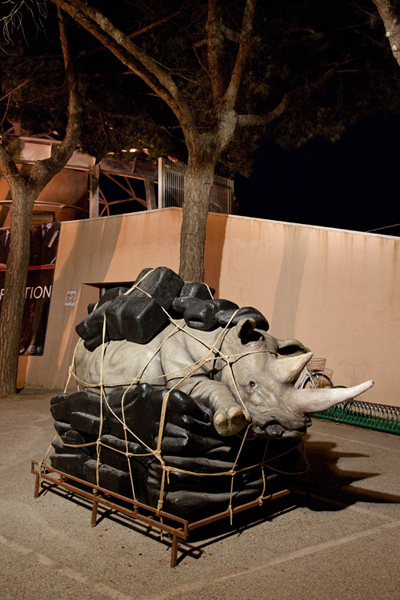Italy
Stefano Bombardieri
From the Iliad to the Odyssey, from Aesop to Phaedrus, from La Fontaine to Collodi in Pinocchio, animals and the description of their behaviour have always been used to explain symbolically and metaphorically the sense of morals and its role in the happenings of human history. All authors of fairy-tales and stories where animals play a main role essentially hark back to the Phisiologus, an ancient encyclopaedia which was written in the II century A.D. in Alexandria by an unknown author and comprises information about the animal kingdom arranged in a binary system. On one hand this work describes the nature and the physical features of each example mentioned, both real and imaginary, and on the other it interprets their being in the world, that is, in practice, the purpose for which the divinity put it on the earth. This hidden nature of the animal places it in fact between the real and the spiritual life. In the Middle Ages an out and out iconography of beasts was devised to fancifully and artistically represent ancestral fears that were exorcized through the work of the artist, who invented them again by sculpting them in stone, as we can see, for example, in the whales with wide open mouths which have been immortalized in the gargoyles of cathedrals. This recovery of the meaning of the animal as a monstrous and at the same time divine creature originates from the classical world, which was full of anthropomorphic characters with a mix of features derived from different animals. The whales, rhinoceros, elephants, hippopotamus and mountain gorillas which populate Stefano Bombardieri’s contemporary bestiary are a part of this historic framework, which has been taking advantage of animals for centuries to tell the most various aspects of human behaviour. They are huge sculptures, mostly made of fibreglass. Loaded with meanings, they not only represent the wonder of the Western world, but they also embody its fears, magic and faults. This is the gigantic Bagaglio black (Black Luggage) which the Brescian artist is bringing to OPEN 12. In ancient times the rhinoceros was identified with the unicorn. Even Marco Polo made this mistake in the accounts of his journey. Later it was confused with the dragon. The reason of this misunderstanding is its horn placed right in the middle of its nose: a bizarre feature which gave rise to fantasies of strength and power. But for the rhinoceros the horn turned out to be a real curse. To take possession of the virtues and thaumaturgic powers that it was credited with during the centuries, man has been constantly exterminating these creatures in a hunt which is as cruel as it is useless.Bombardieri, an artist of concept and a great champion of animals’ rights, who in his work credits animals with all the magic and fanciful qualities which history has conferred on them, without forgetting their inviolable right to life, is exhibiting at Venice Lido an extraordinary luggage which contains a lot of elements. In addition to the above mentioned literary references, the huge squashed and disabled beast reminds us of César’s big Compressions. As a matter of fact Bombardieri looks at this sculptor with interest, but here the beast also reminds us of the artist’s many trips to Africa in recent years. It is not a coincidence that his rhinoceros is so realistic and made with such great sympathy. Pliny the Elder said of it: “The Rhinoceros, with that single horn on its nose, is the second natural enemy of the elephant. After sharpening its horn on a stone it gets ready to fight and while fighting its main aim is to stab its enemy in the belly”. Not at all ready to fight, Bombardieri’s huge beast, with its sad look, captured and tied up, deprived of its dignity, reminds men of their absolute lack of humanity.
Text by Anna Caterina Bellati
